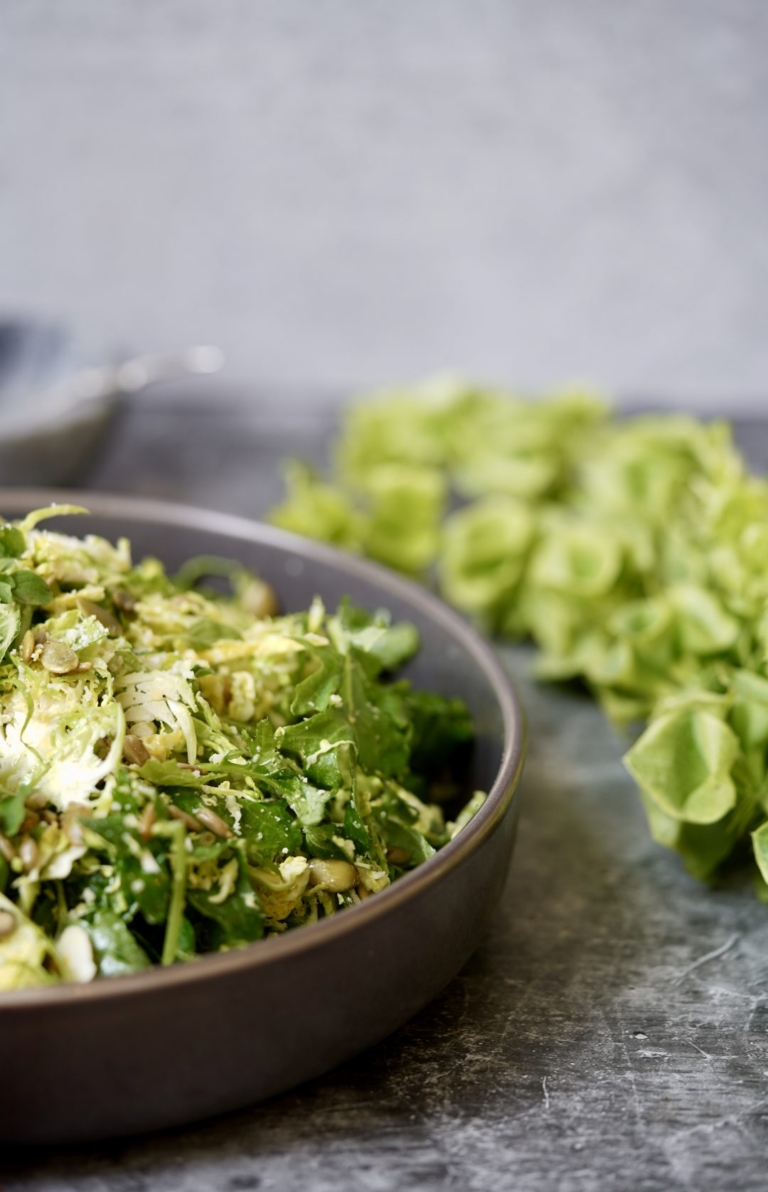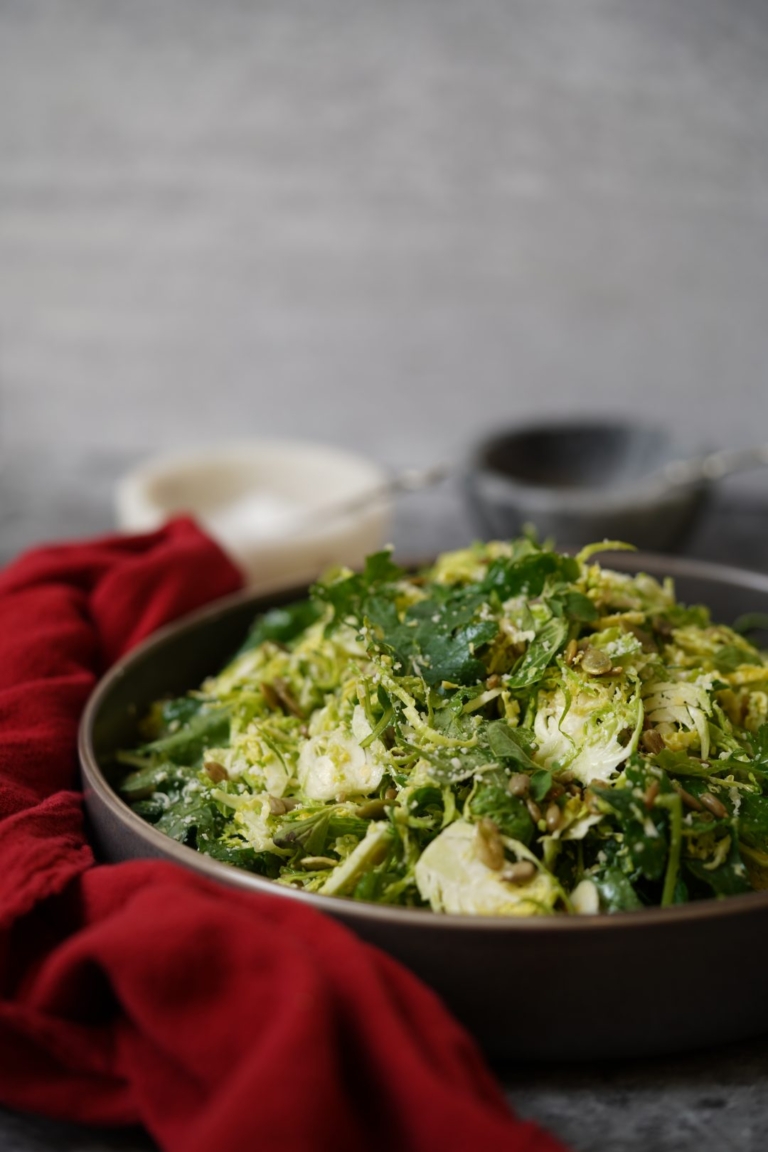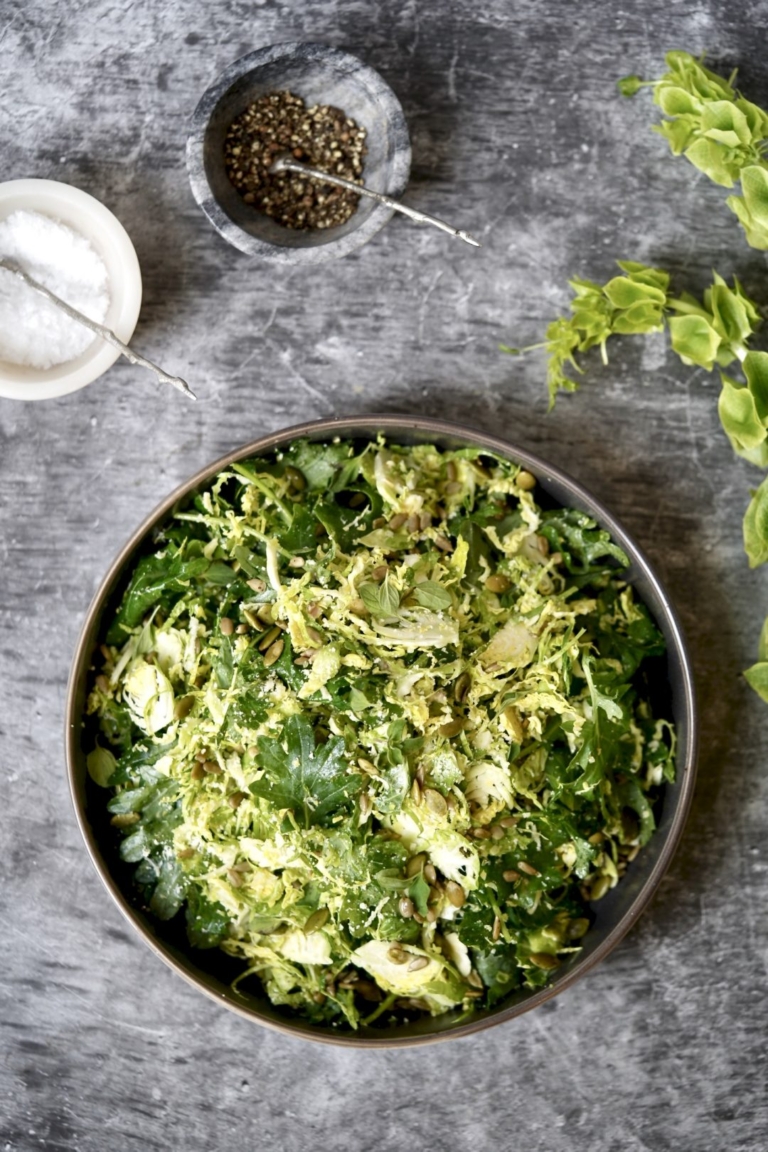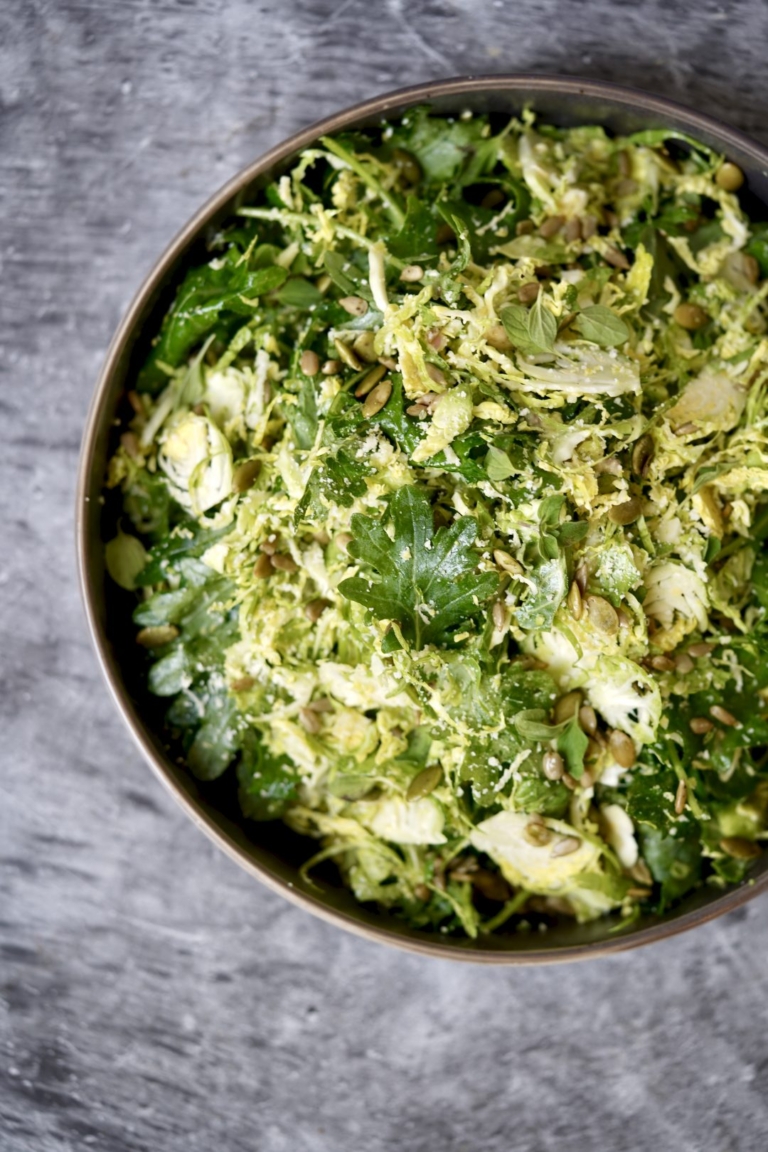Kale Winter Salad
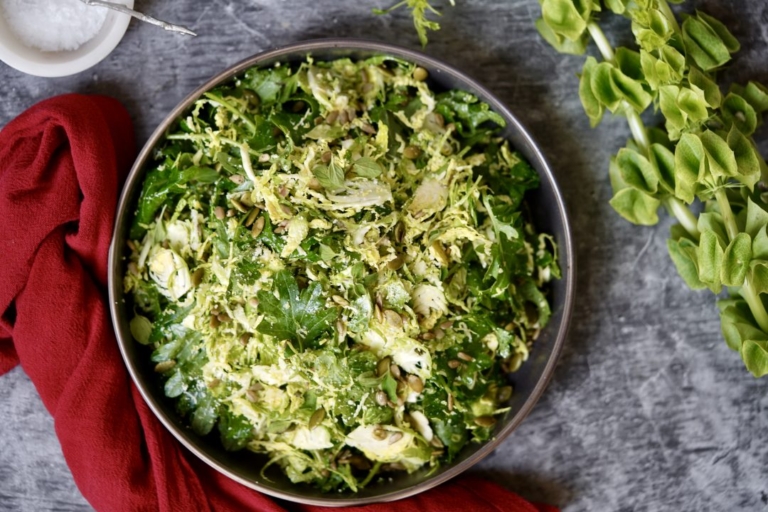
I’m a kale lover and I’m proud of it. Kale is one of the most versatile left greens out there. And if you tell me you’re a kale hater, my response will always be, you’re probably not preparing it correctly. This is my latest favorite, a kale winter salad and it’s a keeper. Simple and straightforward, but delicious.
Tender, baby kale and thinly shaved Brussels sprouts come together perfectly with a light, yet tangy, mustard vinaigrette. Toasted sunflower and pumpkin seeds as well as freshly grated parmesan cheese round of this hearty, and healthful, winter dish I could probably eat every day.
Shaved (or shredded) Brussels sprouts have been a favorite technique of mine for some time now, and most don’t realize how it can impact the overall taste of one of the most feared vegetables there is. Bitterness is one of the biggest complaints about Brussels and truth be told, I get it. There are, however, two things that can counteract kale’s bitterness; adding a little brown sugar when cooking or roasting them or leaving them raw and shaving or shredding them, like you would cabbage, as is the case in this salad. Sounds questionable I know, but trust me, it works.
Kale, an ancient member of the Brassica family, is sometimes spicy, other times sweet. Kale is considered the slightly bitter ancestor of broccoli, cauliflower, cabbage, Brussels sprouts, and kohlrabi. The trick to learning to love kale is understanding what type of kale to use and when. While the tall, dark kale stalks make for the perfect kale chip in my mind, I opt for the tender, sweeter, substantially more mild, baby kale when making this kale winter salad.
Give this simple salad a try and let me know your thoughts, I think you’ll be pleased. Below is a breakdown of the many types of kale you can find there and a few suggestions for what to use each kind for.
Types of Kale
- Curly Kale: This is the type of kale you usually see in the grocery store. It’s a pale to deep green with large, frilly-edged leaves and long stems. Often sold as loose leaves bound together. This type of kale is great for sautéing, hearty soups, or for blending in a smoothie.
- Lacinato Kale: (also known as Dinosaur Kale, Tuscan Kale, Cavolo Nero) The dark blue-green, slender, long leaves have none of the curls and frills common in kales. Instead, the leaves are rumpled and puckered like savoy cabbage and curled under along the entire margin. Great for soups and stews, and salad if tenderized a bit first.
- Ornamental: (also known as Salad Savoy) Frilly and fluffy, ranging in color from white to pink and to purple to magenta, this colorful variety is used on buffet tables for displays. Although its leaves are somewhat coarse, it is still edible. Try it as a way to add color and texture to your plate. Or a garnish, if you’re entertaining
- Red Russian: (also known as Ragged Jack)This kale heirloom looks like overgrown oak leaves in colors ranging from blue-green to purple-red. Cold weather intensifies this kale’s color, but it’s sweeter and more tender than common kale. This kale is great raw in salads or cooked.
- Chinese Kale: (also known as Chinese Broccoli, Kailaan, or Gai Lan) This type of kale can be substituted for regular broccoli in many recipes. High in calcium, iron, vitamins A and C, it’s very popular for stir-fry dishes but is also great steamed or boiled.
- Siberian Kale: One of the most cold-hardy varieties available. Siberian kale has giant leaves and can take quite a beating from cold or pests. It has gray-green ruffled leaves and is grown as a winter crop in the southern United States. This kale is better when cooked, either sautéing or steaming.
- Redbor Kale: Its mass of well-curled reddish leaves with deep purple veins turns a solid, deep violet in cool weather. a kale that is considered both ornamental and edible.
Kale Winter Salad
Ingredients:
For the Roasted Seeds:
- 1/4 cup mixed raw sunflower and pumpkin seeds
- 1 teaspoon plus 1/3 cup Extra-virgin olive oil, divided
- Kosher salt
- Freshly ground black pepper
For the Vinaigrette:
- 1/2 small shallot, minced
- 1 garlic clove, grated
- 2 tablespoons freshly squeezed lemon juice
- 1 1/2 tablespoons Dijon mustard
For the Salad:
- 2 cups baby kale, packed
- 2 cups Brussels sprouts, shredded
- 1/4 cup grated Parmesan
- 2 tablespoons fresh oregano leaves
Directions:
- For the Seeds: Preheat oven to 350 degrees F. Place the sunflower and pumpkin seeds on a baking sheet and toss with 1 teaspoon oil to coat. Season the seeds with salt and pepper.
- When the oven is at temperature, place the seeds in the oven and bake until lightly toasted and fragrant, about 5 minutes. Remove from the oven and allow to cool.
- For the Vinaigrette: In a small mixing bowl add the shallot, garlic, lemon juice and Dijon, mix well. Slowly add the remaining 1/3 cup of olive oil and whisk to blend. Season to taste with salt and pepper. Set aside.
- Place the baby kale in a large mixing bowl and set aside. For the Brussels sprouts, use a paring knife to trim the knobby end of sprouts and pull off any dried or gnarly outer leaves. Cut the sprouts in half lengthwise, then arrange halves cut side down on board and very thinly slice. Or, alternatively, you can use a food processor, such as a Cuisinart filled with a slicer attachment. Add the shredded sprouts to bowl with the kale.
- To serve, add the grated Parmesan to the green and drizzle with the vinaigrette. Gently toss two coat. Garnish with fresh oregano and serve.

